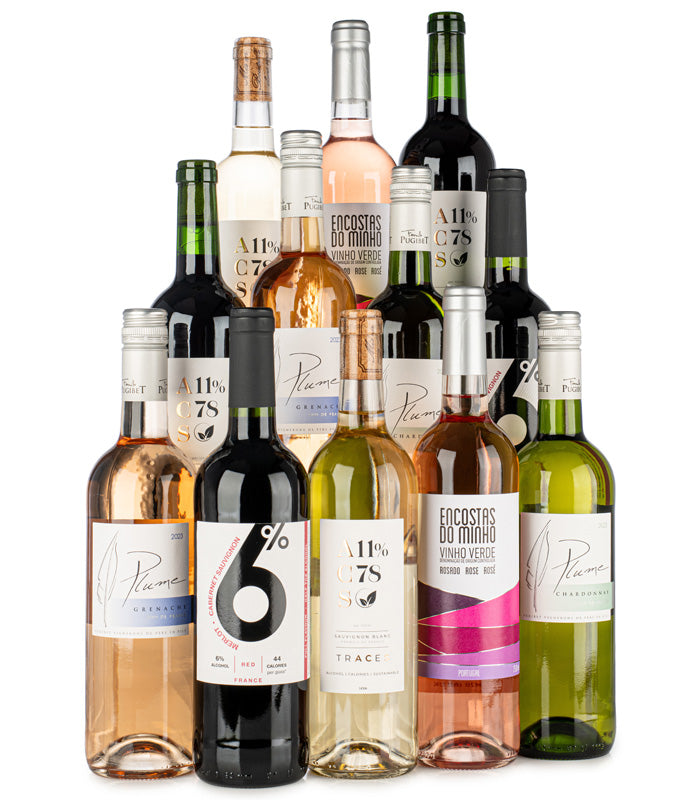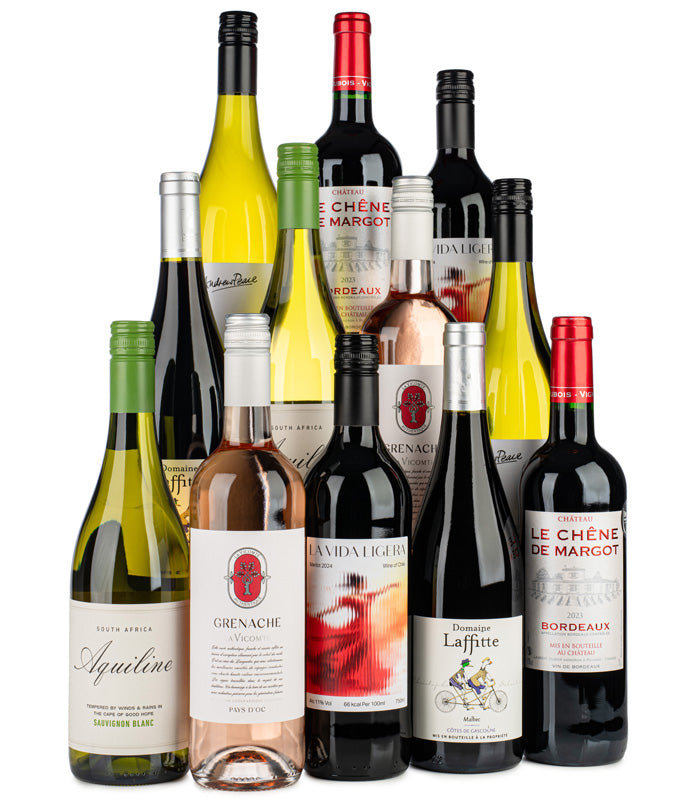Spanish Wine
The Spanish wine scene is made up of years of tradition, innovation and passion. We all love Spain for its Sangria, but the country has so much more to... Read more
ZERO SUGAR WINE
ZERO SUGAR WINE
SHOP BY WINE TYPE
SHOP PRE-MIXED CASES
SHOP BY DIETARY REQUIREMENT


LOW CARB BEER
The Spanish wine scene is made up of years of tradition, innovation and passion. We all love Spain for its Sangria, but the country has so much more to... Read more
The Spanish wine scene is made up of years of tradition, innovation and passion. We all love Spain for its Sangria, but the country has so much more to offer. Whilst red wine mostly dominates Spanish wine production, you will still find a fair share of crisp whites and vibrant rosés.
The origins of Spanish wine traces back to around 1100 BC when the Phoenicians brought vine cuttings and knowledge of winemaking to the country. However, Archaeologists believe that the history of Spanish wine traces even further back to 4000 BC, having found evidence of grape cultivation from then. Wine production in Spain thrived during the Roman conquest. Eventually, winemakers from across Europe would visit and introduce new grape varieties and modern techniques. Spanish winemaking has modernised over the years. however many wineries still honor ancient techniques that have been passed down through generations.
Spanish vineyards are located in three different geographical areas; Galicia, the Catalan coast and The Meseta. Each region has different environmental conditions, particularly soil and climate which impacts the grapes that are grown and, ultimately, the wine. Spain is primarily a red wine country, so most Spanish wine regions have a heavy focus on red grape varieties.
Rioja is arguably the most famous and prestigious wine region in Spain. It's best known for its Tempranillo-based red wines, as well as wines of high quality that are often aged in oak barrels. The vineyards in Rioja are situated on both hilly and flat terrain with a variety of soil types. This diversity helps contribute to the complexity of Rioja wines.
Located in the northwest corner of Spain, Ribera del Duero is another region best known for producing full-bodied red wines with deep colours and intense fruit flavours. Similar to Rioja, Tempranillo is the dominant grape variety in Ribera del Duero. This grape thrives in the region’s climate and soil conditions. Other permitted grape varieties include Cabernet Sauvignon, Merlot and Malbec for red wines and Albillo for white.
Whilst Spain is red wine dominant, there are still some regions that are renowned for producing crisp, aromatic white wines. Rias – Baixas is one of the most esteemed regions for white wine production in Spain. It’s home to the Albarño grape which thrives in the region’s cool, maritime climate. These grapes are known for producing aromatic and flavourful wines with notes fo citrus, peach, apricot and floral characteristics.
Tempranillo is the dominant grape variety, other varieties such as Cabernet Sauvignon, Merlot, and Malbec are also permitted and used in some wines, often in blends to add complexity.
The wine classification system is one of the most complicated aspects of Spanish wine but is used to guarantee quality and authenticity. The system is split into two main categories: the Denominación de Origen Protegida (DOP) and the Indicación Geográfica Protegida (IGP). For a vineyard to be part of a DOP, every stage of the winemaking process must take place within the designated geographical area. DOP regulations also govern which grapes wineries are allowed to use. The IGP category, on the other hand, has slightly looser rules as only one of the winemaking stages needs to happen within the geographical area.
Read lessKeep up to date with all of our latest products & promotions. We regularly run promotions and discounts, along with listing new and exciting products.
We never share your information! View our Privacy Policy